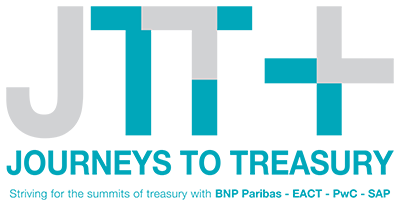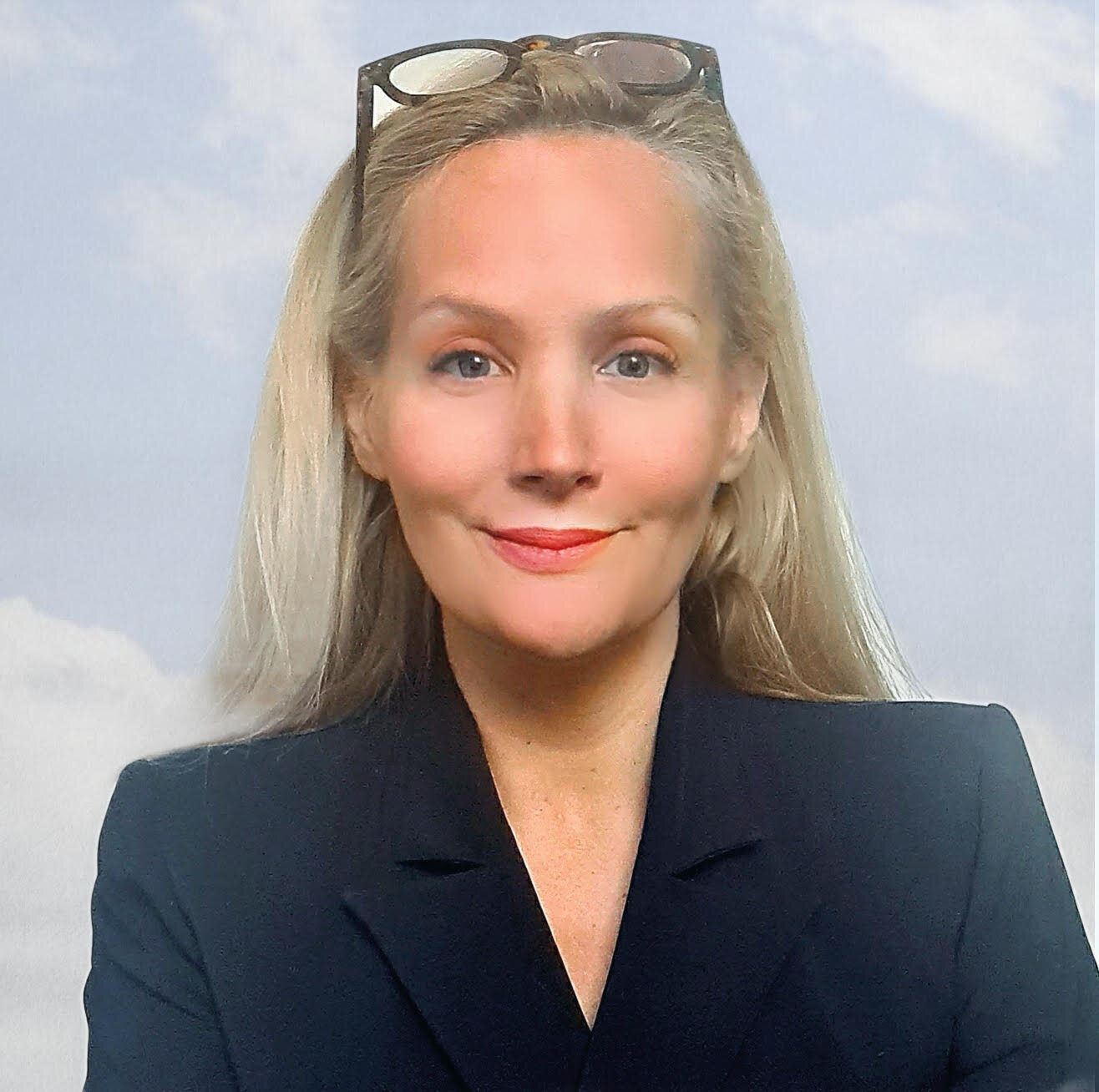Episode 3
What does the past year show us about the future of treasury?
A year since the pandemic closed our offices, treasurers are looking back at the experience of remote working, and thinking about what their treasury organisation might look like in the future. What will the future of work look like, and how can treasurers make their teams more successful, whether working at home, in the office, or a combination of the two?
For the third episode of the Journeys to Treasury podcast, Helen Sanders, speaks with (below, left to right):
Steffen Diel, Head of Global Treasury, SAP;
Barbara Pinzan, Director, PwC; and
Mike Richards, CEO, The Treasury Recruitment Company.
Accelerating the digitisation trend
The pandemic did not bring in the digital world; rather, we saw five years’ evolution compressed into just one year. Although the rapid shift to remote working was difficult for some teams, this was often due to existing challenges that were exacerbated by the crisis, rather than entirely new issues. For example, many treasurers were already experiencing difficulties resulting from an over-reliance on paper and manual processes. Today, few treasurers doubt the value of digitisation and automation. As Steffen Diel, Head of Global Treasury, SAP notes,
“It is essential to have stable processes that are centralised and automated, with as few touchpoints as possible. We manage almost 100% of our payments through a centralised payment factory, for example, with payments channelled through our ERP. This meant that our payment processes could continue without interruption when shared service centre staff moved to home offices, which would have been far more difficult with multiple electronic banking systems, security tokens etc.”
Remote working has also brought greater adaptability and agility, as Steffen Diel continues,
“Remote working increases flexibility, as you can shift tasks across teams and locations more easily, and develop robust back-up strategies that give the business greater stability.”
Shaping the future of work
As treasurers look ahead, they are using the lessons learned during the pandemic to help shape their digital priorities. Company boards demanded access to real-time visibility of liquidity and risk when economic and market volatility was at its height, which is now an essential requirement. Remote working and the heightened fraud and cybersecurity risks emphasised the importance of end-to-end automation and digitisation, as opposed to focusing on automation of individual processes. And as remote working becomes a more permanent part of future working models, a more strategic approach to business continuity planning is taking shape, with a focus on globally accessible systems, follow-the-sun treasury management and consistent processes and controls across treasury and finance centres.
Addressing the gaps
There are challenges and drawbacks with remote working, however, which treasurers need to consider when they look at future working models. Onboarding new team members can be difficult, not necessarily in defining and communicating the role, but ensuring sufficient time, empathy and dedication to ensure that the team shares a common culture. Coaching and mentoring becomes more important when treasurers need to steer younger employees who are at an early stage in their career to help build their networks and build a wider view of finance processes.
The reality is that there will be no single model – whether home or office-based - that suits every treasury. The challenge will be to create the right balance that supports productivity, team culture and internal and external relationships. Barbara Pinzan, Director, PwC explains,
“The feasibility of virtual working, and its complexity, will depend on how the treasury organisation is structured, whether it is organised by function, process or geography, or based on a type of matrix structure.
She continues,
“Once you understand your structure, the next step is to look at the level of interaction and infrastructure required. How often do employees need to engage with other people, whether internal or external? And to what extent is the technology infrastructure that people need available from home? If your employees need a high level of interaction and infrastructure, then working from home will be far more difficult. If some roles or even the whole department has relatively little need, treasurers can be more ambitious in embracing a virtual way of working.”
Bringing the human into the home office
But beyond the technical and organisational issues around remote working, treasurers need to use the lessons of the past year to shape a positive working culture, whether home-based, office-based or both. Many people’s mental health has been affected by long days in a restricted environment, in which the balance between work and home life has become blurred or disappeared altogether. Future working models cannot continue a situation in which people are simply coping, treasurers need to consider how they will motivate and engage their teams and maintain productivity. Barbara Pinzan, PwC emphasises,
“As people moved to remote working during the pandemic, existing performance characteristics were exacerbated: less productive teams became less productive, while productive teams became even more productive. To maintain productivity, people need to be aware of team and individual goals, feel listened to, valued, and enabled with the right remote tools.
The impact on the future treasury organisation
The combination of digital acceleration, new working practices, and transformed business models in many industries creates a unique set of circumstances that make it difficult to predict how treasury organisations will adapt and change in the future. Steffen Diel, SAP suggests,
“The need for a clear segregation of duties has shaped treasury organisations in the past, but with systems allowing very specific personal profiles to be defined, there is less need for a strict definition of front, middle and back office functions. This will make treasury organisations more flexible and versatile, and enable treasury professionals to expand their skill sets. Digital transformation will also continue, not only to simplify, standardise and automate of existing processes, in which many treasurers have made considerable progress, but to embrace new technologies to improve the quality and speed of decision-making”.
New treasury models will also impact on the skills that treasurers will need, as Mike Richards, CEO, The Treasury Recruitment Company (TRC) comments,
“While the ‘core’ treasury skills will continue to be essential, a digital mindset will become increasingly important. This involves the ability – and curiosity – to understand existing and emerging technology and their potential use cases, translate business needs into functional requirements, and leverage data to deliver value to the enterprise. But just as important is the human element. Few treasurers have had management training, but in a remote or hybrid environment, leadership and the ability to coach and mentor professional teams has become more important than ever.”
As we look towards the ‘new normal’, treasurers are starting to look ahead with greater confidence – if not greater certainty. Treasury recruitment is starting to pick up, and many treasury professionals who have felt their careers have been ‘on hold’ over the past year are keen to look at new opportunities that leverage the new experiences, insights and perspectives they have gained over the past year. Mike Richards, TRC advises,
“The past year has been hard. Tell people clearly and specifically about what you have done, what you have achieved and what problems you have solved.”
Just as important is for treasurers to use the insights and perspectives they have gained to position their treasury organisations for success. Mike Richards concludes,
“There is still so much uncertainty about the way that treasury teams will work in the future. But more than just the balance between remote and office-based working is how to create an integrated team in which people feel empowered, valued and trusted. Treasurers need to consider how to be a better people manager, and how to create the conditions for people to succeed, whether at home or in the office.”
10 Tips for Virtual Working
Human touch - virtual working is not just about technology, the human touch is at least as important, and more so virtually than in the office
Visible leadership
Connect with your teams
Create shared goals and expectations
Encourage ownership and accountability
Handle energy positively - problems that can be resolved easily over a coffee gain far greater proportions when working virtually
Provide the enablers people need for virtual working
Delegate appropriately
Ensure that the work that’s happening is visible
Celebrate and reinforce good behaviours and successes
In the next episode…
Driving the ESG agenda in treasury



